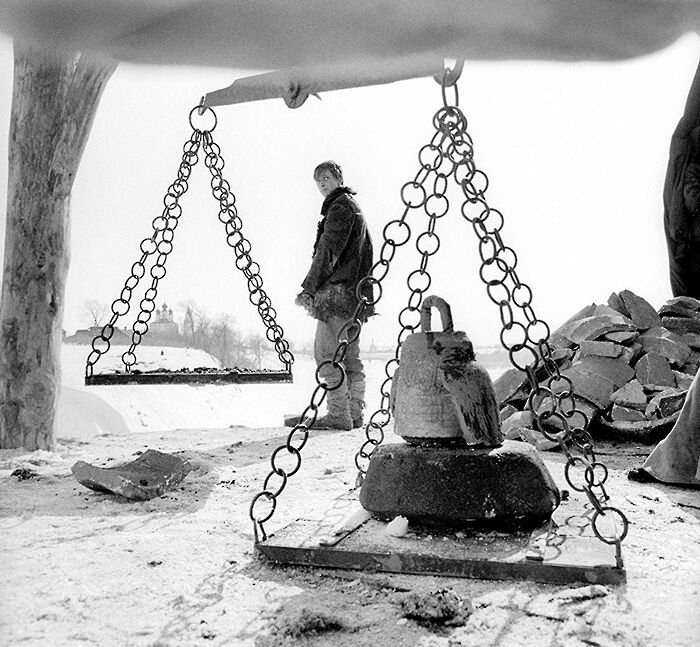Still Looking For Alaska, as there isn’t much to see here
Lottie Reeder finds the TV adaptation of John Green’s novel dated and forced
"We think we are invincible because we are. We cannot be born and we cannot die. Like all energy we only change shapes, sizes and manifestations."
Aged fourteen, in my battered paperback, I underlined this. The line, the novel and its author had a profound effect on me. I’ve thought about it a lot since. It’s nearly six years since I read Looking for Alaska in 2014, when tumblr was flourishing, insta-poetry was in its early days and Pinterest was a go-to source for outfit ideas. Its introspective nature, along with the mainstream success of The Fault in our Stars, led to the revival of the 2005 novel. It was everywhere and remained an insight into the life of dynamic and self-destructive American teenagers.
In 2019, interest has shifted. We are now rigorously focused on self-improvement, mindfulness, egalitarian relationships; being healthy is fashionable and encouraged. It seems strange that in a time like this, Looking for Alaska has made its long-awaited adaptation onto the screen. The timing, that of both the release and the show itself, is immediately off. The episodes are given dates, ‘2005’ unmistakably referenced at every possible point.
Immediately, there’s an uncertainty. Are we meant to view the show as a historical artefact of what it was like to live in 2005? The outfits wouldn’t look out of place now. Alaska and Miles, the lead characters, wouldn’t look remotely out of place on the Sidgwick site. A few minor changes here and there would make the show timeless, as its philosophical foundation intends it to be. Instead, its insistence on rooting it in a 2005 which looks (with the exception of payphones) a lot like today heightens the feeling of it being dated.
One positive of this sensation is the soundtrack. I approached the series optimistically, as the first connection between Miles and Alaska played out to All these things that I’ve done and the first prank is accompanied by Feel Good Inc. Adapting 00s hits, including Buddy’s 2006 cover of Milkshake, works well. Young Summer’s Take Me Out is a haunting addition, creating fantastic darkness to the early stages of Alaska’s decline. Miya Folick’s cover of I will follow you into the dark creates the dream quality that precedes the whirlwind climax of the plot. The soundtrack is clearly thought through and carries the weaker moments of the show.
Dividing a book that could easily have been a film into an eight-part show allows for a great amount of creative freedom. This was successfully channelled into the expanded story of the Colonel (Denny Love) and his complicated relationship with his mother. To me, this was the strongest part of the series, the only storyline that truly evoked feeling towards the characters. Love is phenomenal and moving, his boundless energy and sentimentality making the Colonel the centre of the series.
The rest of the time was filled with unnecessary pranks and excessive examination of Alaska's ‘ratting’. While pranks are integral to the book, they are second to a complex exploration of mental health, trauma and the search for purpose. In the show, they fill the majority of time that deviates from the original plot, time that could be used to develop the parts of the book that made it resonate so deeply. As the pranks play out and Alaska overreacts to being called a ‘rat’ by every character in the show, the power of the original novel is lost.
The creative designs feel more dated than the outfits
Kristine Froseth embodies the character of Alaska Young, conveying the impulsive energy that she has in the book. She is let down by the fact that her trauma is overshadowed by Miles’ infatuation with her. When living, she takes on an Effy-from-Skins unhealthy ‘sad’ girl vibe, despite having the potential to be rewritten the powerful thinker that she is. She also deserved more room as a character to explore her trauma. It is creative decisions like this that make it feel so dated.
Generally, the philosophy that carries the book beyond the realms of an enjoyable read is sporadic and forced. Meaningful lines from the book tumble out of the characters in the midst of superficial dialogue, feeling entirely out of place and cringe-worthy. John Green’s characters are there, but his creative touch is lost to a script that fails to cater to a contemporary audience, or do justice to the original.
Since first reading the book, I have waited for the adaptation, seeing it abandoned countless times. There was something eventually settling in the fact that the most touching John Green book would remain untouched in its original format. Despite the delay, the final result has a rushed feeling. With the exception of a strong soundtrack, a few stand-out performances and strong cinematography, Looking for Alaska does not offer much.
 News / Cambridge academics stand out in King’s 2026 Honours List2 January 2026
News / Cambridge academics stand out in King’s 2026 Honours List2 January 2026 Interviews / You don’t need to peak at Cambridge, says Robin Harding31 December 2025
Interviews / You don’t need to peak at Cambridge, says Robin Harding31 December 2025 News / AstraZeneca sues for £32 million over faulty construction at Cambridge Campus31 December 2025
News / AstraZeneca sues for £32 million over faulty construction at Cambridge Campus31 December 2025 Comment / Plastic pubs: the problem with Cambridge alehouses 5 January 2026
Comment / Plastic pubs: the problem with Cambridge alehouses 5 January 2026 News / Cambridge businesses concerned infrastructure delays will hurt growth5 January 2026
News / Cambridge businesses concerned infrastructure delays will hurt growth5 January 2026









